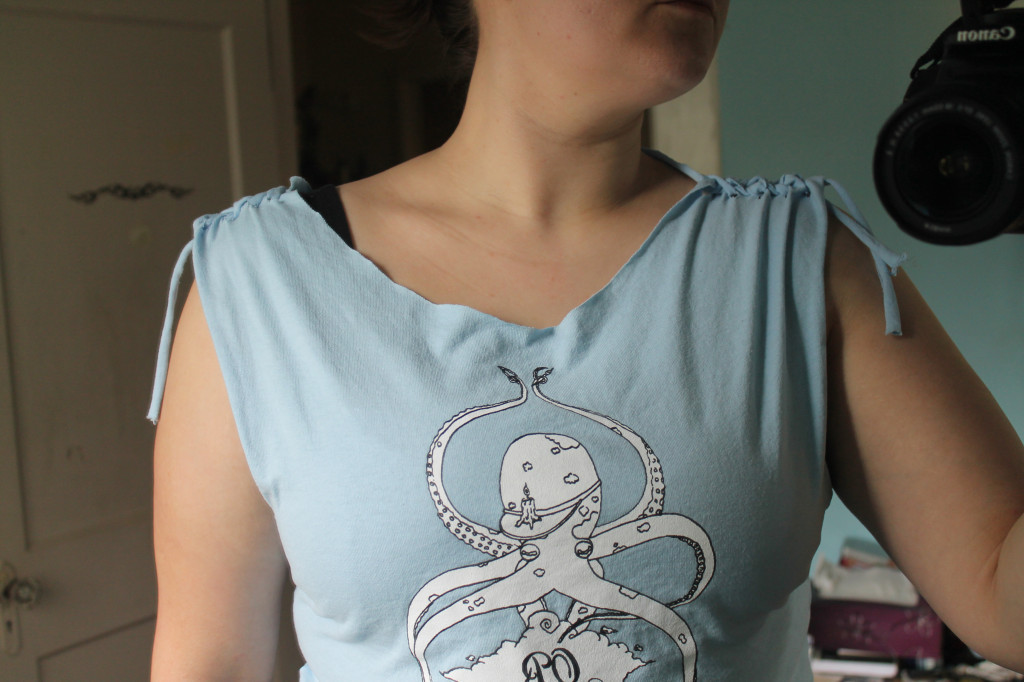The method to my madness
By Sophie Isbister, Life & Style Editor
Hallelujah, I’m halfway through my shampoo-free experiment! For those just tuning in, I’m avoiding commercial shampoo products for six weeks and writing about it. My goal is to test the theory that after an adjustment period, my hair will actually be fuller, shinier, and more manageable without traditional product. Halfway through my experiment, it seems almost possible that my hair will be nicer—but the jury is still out.
The most-asked question I—and the several other women doing no-poo on the Facebook community—receive is, “So what do you wash your hair with?” That’s what this article is for: here are the main ways that people wash their hair when they’re no-pooing, and how they work.
Baking Soda. This method cleans so well that you should only do it every four or five days at the most. You will definitely get that slippery, soapy feeling while washing, and then a squeaky clean feeling after rinsing. I wrote about the baking soda method before, but having done it a few times now, I am a huge fan. Baking soda is very drying, so I make sure I only put it on the roots of my hair (a good idea for all shampoo, actually). Some people even view this method as cheating—the alkaline baking soda works with water and the oil in your scalp (sebum) to actually create shampoo on your head, making baking soda a controversial player on the no-poo scene.
Water Only. The water-only method is chosen by purists in the no-poo movement. Washing with just water is fairly simple, and it’s something that I do every couple of days, in between baking soda washes. It cleans the hair of any dirt or sweat, but it doesn’t do much for the oil. Tips and tricks include massaging the scalp in the shower, and then rinsing with lots of warm water. Not much to this one.
Honey and Aloe. This natural shampoo alternative is touted as a good alternative when you feel like you must wash your hair, but it’s not a wash day. I tried it with mixed results. This method involves blending ¼ cup of aloe (the natural, additive-free kind, usually $7 at a health food store) with two tablespoons of honey in a blender or food processor. Then you take it into the shower with you, plop it on your head, let it sit for a few minutes, and rinse it out very thoroughly. Focus on the scalp, because that’s where you’ll see the benefits. The aloe works to moisturize your hair and scalp, which could be dry from the baking soda washes. Aloe also balances the pH in your hair, and the honey leaves it shiny. After I tried this wash, my hair felt a little cleaner, but not the squeaky clean I usually get from baking soda or traditional shampoo.
Egg. This one I haven’t tried, and to be honest, I’m a little scared to! I’ve read one too many horror stories about people rinsing with water that is a tad too warm and ending up cooking breakfast in their hair. The protein in eggs is apparently great for hair—simply blend one-to-three eggs (depending on how much hair you have), dilute it with equal parts water, apply it to your hair, let it sit for at least five minutes, then rinse it out with cold or tepid water. Do not heat style or blow dry afterwards, as any egg reside will cook in your hair.
Natural conditioners. This category includes anything that you would add to your hair in place of a traditional conditioner. I’ve been using the apple cider vinegar rinse I wrote about at the beginning of this series, and it’s been working nicely. It can be used every few days—more frequently than the baking soda wash. Distilled white vinegar is also an option, as is lemon juice. Dilute a couple tablespoons in a cup of water—but be careful with lemon juice, as it can lighten your hair.
Oil is also an option to use on the ends of your hair if they’re a little dry. I don’t have this problem, because as I’ve already mentioned I have more oil in my hair than the Sharks and the Jets put together. But if you have dry hair or split ends, try putting a teensy amount in your hair. Just make sure you don’t use a heating tool on it afterwards, like a flat iron or a curling iron—this is a great way to literally cook your hair.
I’ve read about many more options for the daring no-pooer, but I don’t know if I’ll be rushing out to try a clay wash, an apple-banana mask, or a tea rinse anytime soon. I’ve been loving the simplicity of my new no-poo life, and piling a grocery list on my head just seems overcomplicated.



